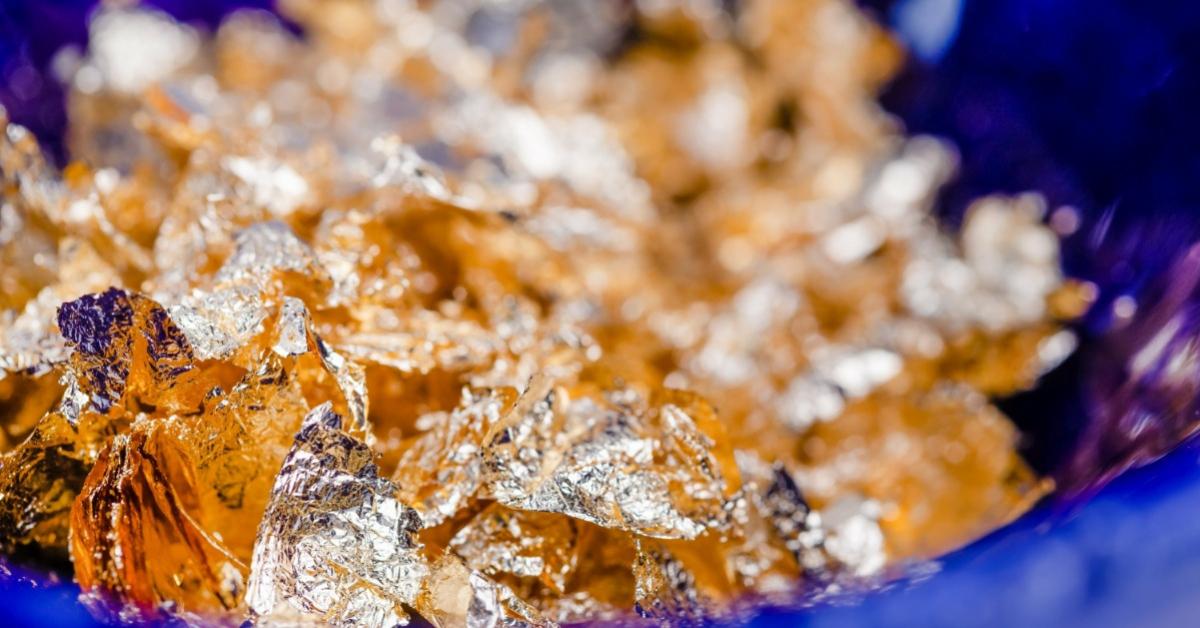
African countries emerged as “independent” nation-states in a context of a debt-based fiat money system, the fiat dollar standard. Independent is in quotation marks because Africa’s countries’ independence is nominal. That is said with due respect and gratitude to all brave men and women who fought, bled, and died to end (direct) colonialism. Still, Africa remains under indirect colonization. One of the most crippling, and certainly the most shackling, forms of subjugation Africa is under is monetary colonialism.
In “Africa’s Way Out of Monetary Colonialism,” the author explains why and how fiat money damages African economies and lives and points out that a common African gold currency, a long-held vision that many Africans still hold, is a way to effectively achieve monetary and thus economic independence. That being so, this article presents the nilar, a pan-African gold currency.
Why the Name Nilar?
Nothing is more symbolically and historically pan-African than the Nile River. The Nile is Africa’s and the world’s longest river. Its drainage basin includes a whopping eleven countries: the Democratic Republic of the Congo, Tanzania, Uganda, Rwanda, Burundi, Kenya, Ethiopia, Eritrea, South Sudan, Sudan, and lastly, Egypt, where the Nile crosses to reach the Mediterranean Sea.
The Nile is also the world’s most historical and culturally significant river. The Nile valley is home to some of the earliest and most remarkable civilizations. In short, the Nile River is the most iconic, mythical, and emblematic river in human history. A river that, for thousands of years, symbolizes life, development, and prosperity. Similarly, if implemented, the nilar would create a new life of stability and development for an economically unified Africa.
How to Implement the Nilar
The Central African Republic has established bitcoin as a legal tender, and Zimbabwe, an unstable and inflationary economy, has finally made the sound decision to introduce gold coins to solve the persistent problem of rampant inflation. These are little but nonetheless significant steps forward in the right direction. Moreover, they could be signs that Africa may have had enough of fiat money colonialism and the hardships it creates.
Also, a multipolar world is inevitable and may be approaching. Africa should not remain underdeveloped and dominated in that world. The nilar is the key. For this to happen, however, a shift in economic thinking is necessary. Here is why: Postcolonial African societies have lived under oppressive and un-African economic concepts (e.g., fiat money, central bank, socialist and other statist economic systems) which, evidently, failed to deliver economic prosperity and social harmony. So, the ongoing crises is opportunity for rebirth. African societies should restart afresh based on Africa’s economic heritage.
Ruinous (and foreign) statist models must be abandoned if African societies are to be free and prosperous.
The following are steps African leaders can take to implement the nilar:
At an African Union summit, leaders would announce the official launch of the nilar, marking the beginning of the translation process.The current debt-based fiat system is undoubtedly unsustainable. Many economies are gravitating toward collapse while some are already faltering. African countries with elevated default risk should preemptively default on all foreign debt obligations. Africa’s governments will have to become fiscally responsible and sound as systemic debt and deficit spending are irreconcilable with the nilar.Monetary inflation by central banks (i.e., fiat currency printing) and by commercial banks (i.e., artificial credit expansion) must also be abandoned completely. Fractional reserve banking, a fraudulent and inflationary concept, is to be prohibited.Given that most African countries have little to no aboveground gold holdings, governments should swiftly remove all repressive measures (e.g., tariffs, nontariff barriers, taxes, endless permits, and other onerous artificial barriers) so that the gold and related markets become FREE. The supply chain of gold mining, processing, refining, minting, buying, selling, storing, importing, and using minted or unminted gold should be FREE. This would instantly spur local gold production. Which would also attract foreign capital and facilitate the importation of gold bullion into Africa. Thus, significantly increasing the quantity of minted coins, bars, and minibars in circulation within a short period.Every problem is a potential business. So, a free gold market would also result in companies and tech applications to naturally spring up to address issues in the gold supply chain. For instance, applications that prevent fraud, instantly certify fineness, custodians, insurance, safe transportation, storage vaults, among others. All of which is essential for the translation.Legal tender laws are also to be scrapped altogether. Monetary freedom should be the norm in Africa again. Besides, this will help keep deflationary pressures in check and minimize potential destabilizing shocks as fiat currencies (e.g., cedi, dollars, euros) circulate freely and exchange at free market rates against gold. Said differently, monetary freedom is essential to ensuring an organic and orderly translation.The nilar can start with denominations of 1, 2.5, 5, 10, 20, 50, and 100 grams of fine gold. One nilar is one gram of fine (999.9) gold, and one gram of fine (999.9) gold is one nilar. In round or rectangular shape but always 999.9 fineness. Denominations and fineness (999.9 only) will be stamped on one side of every coin or bar, while the other side is for the issuing entity to decide what to stamp. For instance, a nilar coin minted in Namibia may have the martial eagle. A nilar coin minted in Senegal may have Cheikh Anta Diop’s face, and so on. So, one side of the coin is uniform across Africa, and the other is reserved for the issuing country’s heritage.The nilar can be tokenized to circulate digitally as a cryptocurrency. However, notice that the reserve requirement must always be 100 percent. For instance, if a bank or a fintech startup issues digital nilars, its gold reserves must be independently audited to ascertain the 100 percent ratio. Fractional reserve banking is banned at this stage, and fraudsters should face severe penalties.Central banks will cease to be central banks because they will no longer print fiat currency and arbitrarily manipulate interest and exchange rates. The fiat era must be over at this stage. African central banks will become Conversion and Minting Agencies (CMA). Besides minting nilar coins and handling currency conventions, CMA could provide other related services, such as storage or custodianship. State CMAs will face competition from private CMAs, thus forming dependable and built-in checks and balances. This will also ensure that no CMA or bank ever obtains monopolistic market control.Both interest rates (e.g., a bank loan) and exchange rates (e.g., nairas vs. dollars vs. nilars) will be FREELY set by the local market. Recall that this transition is taking place in the context of monetary freedom, not through top-down technocratic imposing interests and exchange rates. Moreover, notice that markets will transition at a different pace. For instance, market conditions in South Africa, which has 125 metric tons of gold it can deploy, will differ from, say, Cameroon, which may not have a single metric ton of gold bullion. Only free markets can handle such a complex and tectonic shift. Bureaucracy and coercive interventions would result in chaos and, ultimately, failure.Debts, contracts, and other legal obligations will be renegotiated by the involved parties based on local free market-set interest and exchange rates. Government and corporate bondholders, merchants, contractors, employers, employees, etc., will decide how to transition to nilars. Local authorities can produce educational content and guidelines. Guidelines, not regulation. The market must be free to ensure success.African states with gold reserves will start minting nilar coins to pay local bondholders, contractors, and government employees. As the amount of nilars in circulation steadily increases, African fiat currencies are to be removed from circulation in tandem.Africa’s governments must also stop repressing Africans’ natural right to full property ownership. Property rights in gold (and other natural resources) must be established so that Africans, not their governments (i.e., politicians and bureaucrats), fully own their plots or hectares of land and whatever may or may not be found underneath them. For example, if an Angolan discovers a gold deposit underneath a parcel of land that is rightfully hers, be it a tiny or mighty gold deposit, it should be her absolute private property, and not that of the Angolan government. Such is how a free and just society functions.
Lawrence W. Reed asks critics of gold money some pertinent questions that are worth mentioning here for African gold money critics too:
What is government-issued fiat money made from? Angel breath? Divine manna from monetary Heaven? Of course not. Its digital form is composed of ethereal ones and zeroes while its physical and familiar form is made from trees. Trees! When and where in history did a tree—or any tree derivative—emerge naturally and voluntarily as a reliable medium of exchange? Never and nowhere, except when it was issued as a kind of “receipt” for the real thing. Opponents of the gold standard want us to believe that gold is old fashioned, that a more “enlightened” perspective is that money shouldn’t come from a hole in the ground. Think about that. They are telling us that money should instead come from—drum roll—trees! Hmmm. Which sounds more dependable—a gold standard or a tree standard?
Conclusion
The nilar is the means by which Africa achieves monetary and economic independence in a unified manner. Its imperative is overriding because the nilar is the principal pillar upon which stable, free, prosperous, and structurally just African societies can be based. It is also the most crucial factor for the success of the African Continental Free Trade Area as a single African market. And a free single African market powered by the nilar, plus little to no taxes, can transform Africa from an underdevelopment-stricken region into a global economic power within fifteen to twenty-five years.






